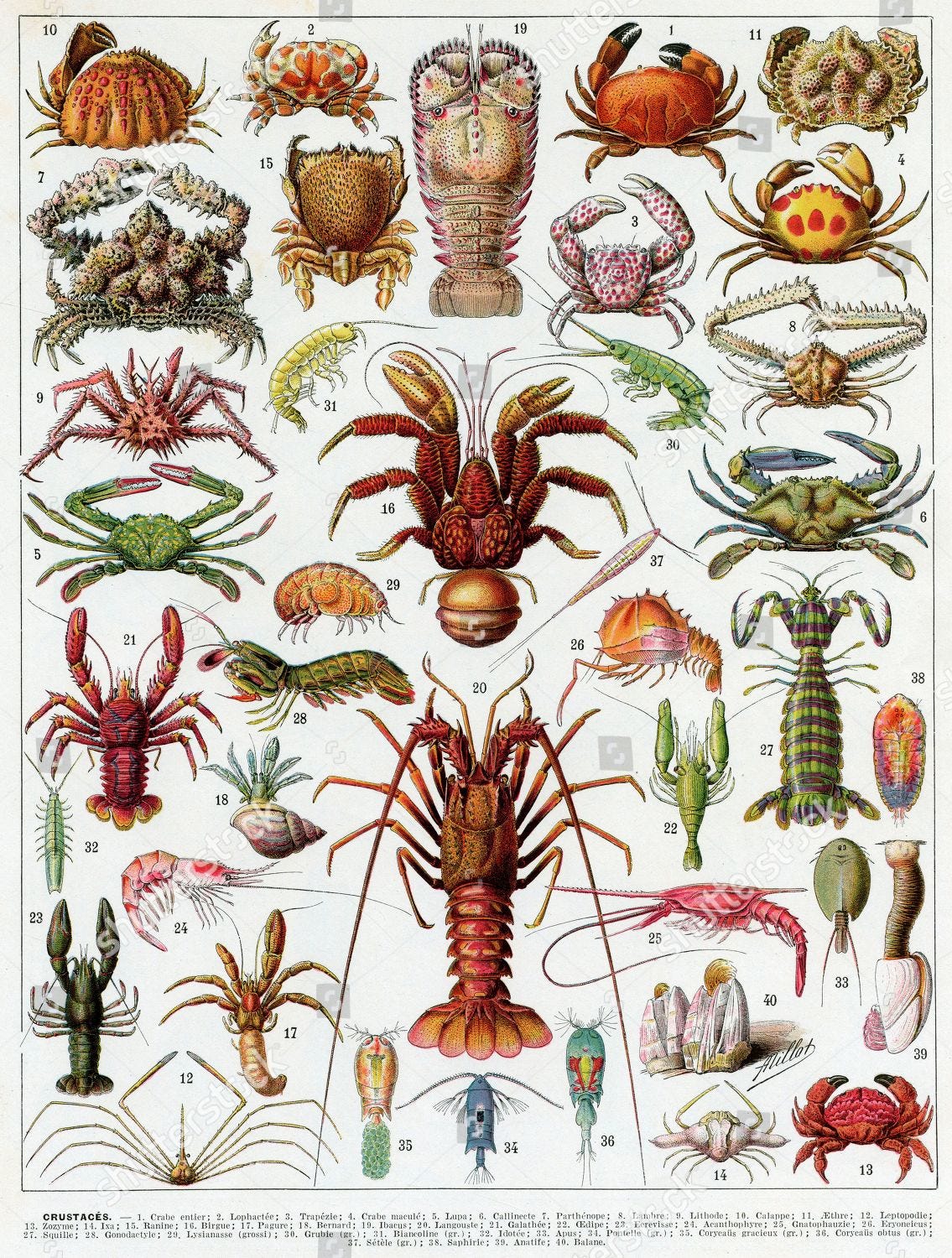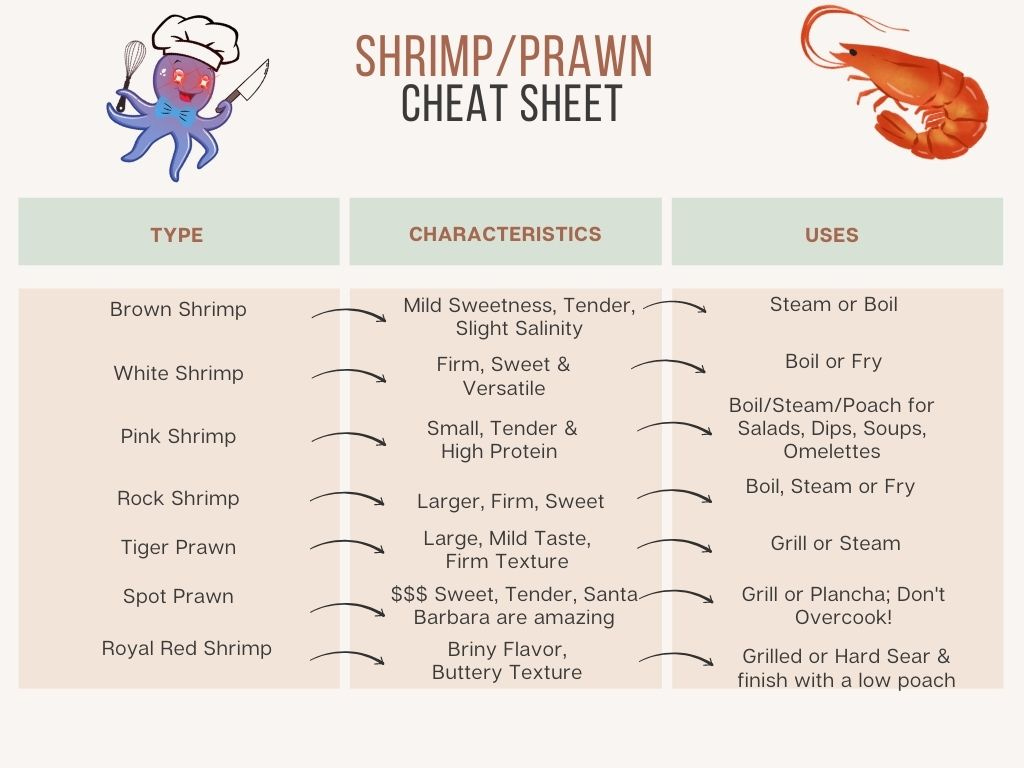Greetings Friends,
It's estimated that +70% of seafood in the USA 🇺🇸 is consumed in restaurants, because home cooks don't feel confident.
The data, from a NOAA Fisheries report 🐠 published at the end of 2018, stated that 🇺🇸 Consumers spend $100B annually on Seafood 🦞 🐠 🦐 🦪 🦑 🐙 .
Of that $100B, $70B is spent outside of the home in the form of restaurants, catering events, cafeterias, etc. (Even accounting for standard variance, this is a high %)
This coincides with my experience, as some of the most frequent questions I get from homecooks are in relation to Seafood.
*Note: While you can say that Seafood cookery is more popular in many other places around the globe 🌍 , the point still stands that, as a whole, homecooks feel less confident cooking Seafood vs Chicken, Pork, Beef, etc.
We will continue to make seafood an important part of our cooking journey. Aside from the nutritional benefits, seafood of all sorts is delicious so we can enjoy our food and maintain/improve our health.
Further, this is one ingredient subset that presents homecooks with a lot of options. Raw, Seared, Broiled, Sautéed, Fried, Steamed, etc.
As a rookie cook I learned a ton working the Fish 🐠 station at fine dining, and seafood-centric, restaurants. Everything from breaking down whole fish 🐟, cleaning squid 🦑 , cooking octopus 🐙, preparing shrimp 🦐 … and much more.
Over the years, Seafood remains a passion that I never grow tired of cooking. It can for you too!
I’ve already dropped a Twitter Thread on Perfectly Cooked Skin-On Salmon (or Sea Trout) which was just quoted in a NY Post Article today 🙌 ⬇️
We’ll hit more fish cookery down the road… but today we are going to talk about the most popular and consumed Seafood in the US 🇺🇸…
Shrimp 🦐
Yup… as Bubba Blue so famously said “…. shrimp is the fruit of the sea”.
This bares out in the metrics. Shrimp is the most consumed seafood (by weight; ) 4.6lbs) from the same report.
You can travel practically anywhere in the world and find shrimp 🦐 available. Whether it’s fresh/frozen, at market, or in a restaurant… shrimp 🍤 has a place in most cuisines.
Below is an intro with some basics to get you started on types, sourcing, cooking options, and some tips and tricks to cooking just right. 🙌
Biology:
Without getting into the weeds, Shrimp are part of the Crustacean sub-phylum in the Decapod order, meaning 10-legged. (biology class flashbacks, <reeeee!> 😂 ).
You’re familiar with a lot of decapods… lobsters, crabs, prawns, shrimps… Found in seawater and freshwater.
Nutrition:
Shellfish are a secret weapon in regards to protein and magnesium. Most people are not getting enough of either, which has longterm quality of life consequences.
Lack of protein is a contributor to over-eating and feeling chronically hungry… which can lead to binge eating. (See my friend BowtiedOx’s latest Substack on Protein!)
Most people are running a large deficit of magnesium as well. Magnesium effects so many different health angles, including Sleep Quality, that I would refer you to my friend Grimhood to learn more and instantly get your magnesium levels up. I’ve integrated a magnesium sleep stack that has revolutionized my rest and sleep quality (not medical advice 😇 ).
The TLDR: Eat more shellfish, including shrimp, for protein and magnesium rich sources!
And the best part… there are 100’s of ways to make shrimp delicious.
Types/Sizes:
75% of shrimp in the USA 🇺🇸 is harvested in the Gulf Mexico. (3) types dominate the harvests. White, Brown & Pink. However there are many other important culinary species which we’ll talk about below (and I made an easy cheat sheet for reference)
One thing to remember is that shrimp are usually sized by the average number that make up a 1lb weight. This is done in 2 ways. Using a “U” or a range x/y.
If you see U15 that means 1lb of shrimp will be under 15 pieces (14 and below). Whereas 21/25 means you’ll get between that number in a 1lb weight.
The number spread can give you more consistency vs the U measurement but that’s normally not an issue unless you’re doing large quantities at a restaurant and need uniformity for specific plates.
Here’s a chart with the common sizes and counts:
*Note: Sizing terms aren’t regulated so best to use the shrimp count for reference and not go off of size names. They will vary from brand to brand, market to market, etc.
Shrimp vs Prawns:
Prawn this… shrimp that… what the heck is the difference?
In reality, not much… some countries like Australia 🇦🇺 and the UK 🇬🇧 use “prawn” as a blanket term that can include shrimps or prawns… and so this is where it can be confusing.
They are in (2) separate sub-orders so here’s a few differences.
A few biological differences:
Size: Prawns tend to be larger than shrimp
Shape: Prawns have a straighter body, whereas shrimp hold more of a “C” curl shape.
Water: Prawns are mainly freshwater decapods, whereas shrimp are mainly salt water.
Here’s a Cheat Sheet with some common Shrimp and Prawn varieties:
Culinary Options
Below is a short list to give you a few ideas of flavors and preparations to explore using The Fruit of the Sea 🌊 🦐
Ceviche 🇵🇪
Camarones Aguachile 🇲🇽
Shrimp Cocktail 🍅
Shrimp Stir-Fry 🔥
Chili 🌶 -Butter 🧈 Shrimp
Shrimp Etouffee 🍛
Shrimp Gumbo 🥣
Shrimp Boil 🥔 🌽
Firecracker Shrimp 🇹🇭
…and there’s a ton more (drop your fave in the comments and will get to some recipe iterations soon!)
Before we move on, consider joining as a Paid Subscriber and get access to every past issue and all the Legit Octopod Recipes, Cooking Guides and more… all for just $0.13 a day!
Sourcing/Storage
A lot will depend on the type of shrimp that you’re looking for and what your purchasing options are.
Shell-On or Off:
While you can get peeled, EZ peel and all sorts of variations, the shell on shrimp hold up the best.
“Fresh” or Frozen:
In general, IQF (individually quick frozen) will be your best option. These shrimp are frozen quickly and efficiently to preserve their flavor, texture and slow any degradation. Avoid block frozen shrimp, as they can break apart during thawing.
Most “fresh” shrimp at markets have been previously frozen and then thawed on site. If you want to opt this route, make sure the shrimp don’t look slimy, have no smell of ammonia and the eyes should be bulging out (not sunken in).
Finally, just avoid precooked shrimp. Results are always lackluster.
Note, for Spot Prawns… if you want to splurge would highly recommend getting live spot prawns shipped overnight to you. Or finding them from a purveyor who has them live. They are $$$ but there’s no substitute for the flavor, texture and experience IMO.
Storage:
If you went the IQF route it’s easy… just put in your freezer. If you’re got “fresh” store on ice making sure they aren’t sitting in standing water.
To thaw frozen IQF shrimp: place in a bowl of room temperature water and place in a sink under a slow dripping faucet. Should be ready quickly (time depends on size). You can pull them out a day before and out them in the fridge to give them a head start but not noecessary.
Cooking:
Preparing:
Peeling: Always peel the shrimp from the bottom where the legs are, pulling up towards the back. Heads can be removed with a simple twist of the hand. And tail ends can usually be pinched off easily. (Note some preparations don’t require peeling before cooking… like boils, peel ‘n eat, etc.)
Deveining: This is really polarizing but doesn’t need to be. The right answer when you’re cooking is: it’s up to you!
The vein that runs along the back of the shrimp is the digestive tract. While it can have a sandy or bitter taste, most of this is about aesthetics. If I’m having a shrimp boil, no I’m not deveining every shrimp that I peel… eff that.
If I’m doing a mild a light preparation, then yes… aesthetics and don’t want any bitter flavors.
Deveining is really simple, just take the tip of a paring knife and make a shallow slit starting at the tail end of the shrimp and stopping just before the head. Take the tip of the knife back to the tail end, use the tip to locate the vein, hold it against the blade with your thumb (of the same hand) and simply pull back. It should come off in one piece.
I’ve found going from tail to head is much easier and faster when deveining… 1000’s of lbs of shrimp later 😂
Texture:
This is where a lot of people mess up.
Most people overcook their shrimp until the texture is like a ball of rubber bands. Springy and chewy… not enjoyable.
Below we’ll over some recommended techniques
Boil/Steam
This is best with larger shrimp so you don’t run the risk of overcooking. Primarily for peel ‘n eat, serving chilled (Shrimp Cocktail), etc.
You absolutely want an ice bath ready so you can stop the cooking process immediately. You can put whatever aromatics or seasonings in the water… the effect will be mild.
Rule of thumb, put your shell-on shrimp in the boiling water and set a timer for 5 mins. After 5 mins, pull one shrimp out, pull the head off. If the center is opaque and the outer edges white/red (depending on shrimp type), then you know the tail end is already cooked, the top is close. So remove and put into the ice bath. This will stop the cooking process and the thick end will carry over slightly.
Sear/Poach:
Shrimp over cook quickly… this is one of my favorite all-purpose cooking methods. Get a pan screaming hot and sear the outside of each side until golden/colored. Remove from the pan. Depeninding on the recipe… assemble and cook the rest of your ingredients and then add the shrimp at the end to warm through… leaving the insides tender and delicious.
Soup/Poach
For soups, 99.9999% of the time your best bet is to build the soup and cook completely… adding the peeled shrimp in at the very end for 3-5 mins. Then turning off the heat. The shrimp will be done in just minutes and be tender, silky and delicious.
Cooking Hack:
One technique I’ve grown to love over the years is an old Cantonese 🇨🇳 trick. An alkaline bath! This ensures you never have mushy shrimp.
Soaking the shrimp in water containing baking soda causes the meat to plump up and retain a wonderful texture. Especially if steaming. (Think dumplings 🥟) Rule of thumb is to cover the shrimp with water and 1 tsp of baking soda per pound. Soak for 30 mins, then rinse, dry, etc before proceeding.
If you want to incorporate more frequently, you can use a dry-brine (seasoning) method of 1 tsp of kosher salt and 1/4 tsp of baking soda per pound of shrimp. Spinkle over your shrimp like you’re seasoning and let rest 15 mins in fridge. Then proceed.
This should be more than good foundation to get you started. Drop comments on your favorite Shrimp recipes you want to learn and I’ll select some to add in to the rotation 🙌 🦐
Next Up is Beef Fajita’s (we aren’t done in 🇲🇽 yet!) so I’ll be seeing you soon… 🥂
Until next time!









I don’t suppose you have a shrimp remoulade recipe?
Love the writing style, concise, informative, fun and relaxed.